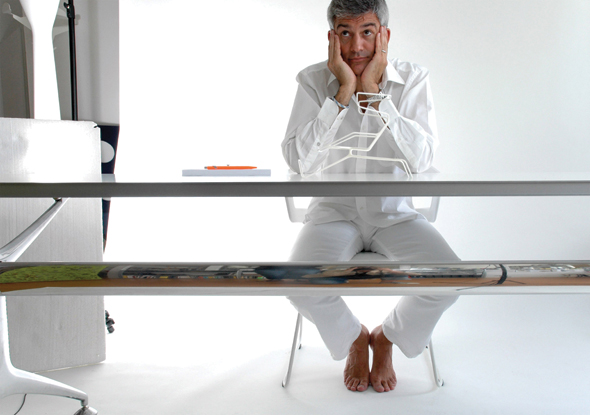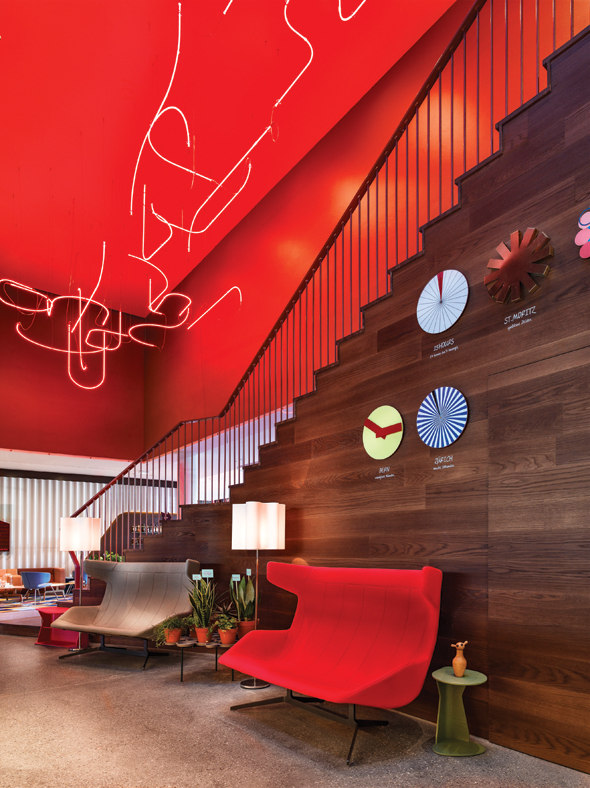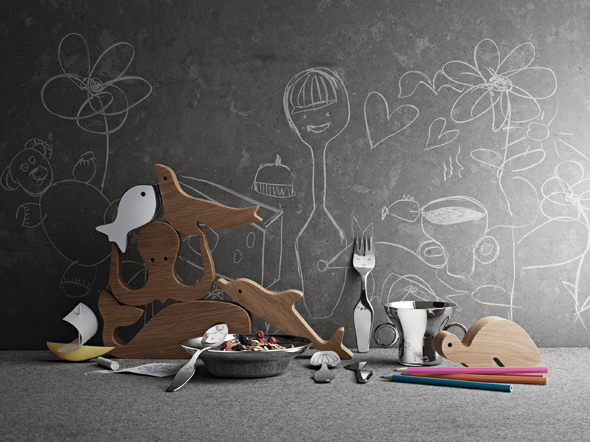
He has been called the “playboy” of the international design arena—not for his looks or his charm, but because he plays a lot with his expression and sketches, with his designs and in life. The Zurich-based designer Alfredo Häberli is known for creating functional and alluring design objects that are full of character.
Häberli is an inventor through and through. His notebooks are always filled with cartoon-like sketches depicting the latest ideas for glass, ceramic, interior and furniture designs. All these drawings emerge from his need to express himself through stories and a unique narrative. This slightly naïve expression translates into his designs and has a charming immediacy that appeals to children and adults worldwide.
Born in Buenos Aires, Argentina, in 1964, he moved to Switzerland with his parents at the age of 13 and graduated with honors in industrial design from the Höhere Schule für Gestaltung in Zurich, in 1991. He started his first studio in Zurich two years later, and today he is an established designer working for some of the leading companies in the international design industry.
His versatile portfolio includes exhibition concepts, industrially produced everyday objects and even architectural projects and technically sophisticated pieces of furniture. He has collaborated with companies all over the world, such as Alias, BD Barcelona, Camper, Georg Jensen, Iittala, Kvadrat, Luceplan, Moroso, Schiffini and Vitra.
His personality and his way of thinking and working clearly translate through his simple and humorous lines. Combining tradition, innovation, joy and vigor, his designs are often strongly influenced by his early childhood in Argentina as well as by his natural everyday curiosity and studies.
His children’s collections, the Twist Family and Aquamarine, created for the Danish silversmith and heritage company Georg Jensen, perfectly exemplify his philosophy that design shouldn’t always be completely controlled. Sometimes its exact purpose needn’t be defined.
The ultimate goal for Häberli is to design for the real human being, taking the user seriously and showing respect. Individuals are the ultimate source of inspiration for his creations—observing how a man, a woman or a child is fascinated by objects. “They are my biggest motivation,” he says.

He often stresses the importance of producing art not purely for the sake of the artist, but instead he believes that the best compliment a designer can get, is when the final object becomes popular with its users. Taking responsibility for what he designs and always designing with the clear ambition of improving in a humanistic way is key.
Another great example of his playful and unique style, is Häberli’s work for the Danish textile manufacturer and industry leader Kvadrat. “Ever since I started working with design, I have known and admired Kvadrat’s products. During the process of designing Kvadrat’s showroom, which consists almost exclusively of fabric, I was inspired by the versatility of the textiles and was very happy when I was asked to create a collection for Kvadrat,” explains Häberli about his debut as textile designer.
Until now this partnership has resulted in several installations at Kvadrat’s famous Milan showroom as well as a collection of seven curtain and upholstery textiles, including the unique Village curtain, designed as “a story for children when the light is out and the door closed.”
Recently Häberli has developed the 25hours Hotel Zurich West together with his design team—his wife, Stefanie Häberli-Bachmann, and Aeberli Vega Zanghi Architects. With the working title “The Smile of my Hometown” this project is Häberli’s first complete design—which gave him the chance to combine his combine his well-known pieces with new, exciting ideas especially for this space. The hotel is riddled with artistic and graphical interventions and is not only a declaration of love for Zurich but also a city guide in the form of decorations, objects and quotes found throughout the interior. In its own way the space is a graphic mirror of the city. Häberli seems to have a unique gift for giving objects a new look and a new meaning—always breaking barriers with a smile.
In a 2009 interview with the DesignBoost founder Peer Eriksson on the sustainable city, Häberli expressed his belief that “observation is the best way of thinking” and further stressed that for this to work it is extremely important to know yourself well, to work on yourself and to be critical, to think and to always reflect every night. His goal? Always wake up a little bit better the next day.
When asked about his rise to fame he stated, “I just want to work and not be considered a star. Stars are in the sky and not down here where I am; I consider myself pretty grounded.”
Text by Louise B. Zastrow


